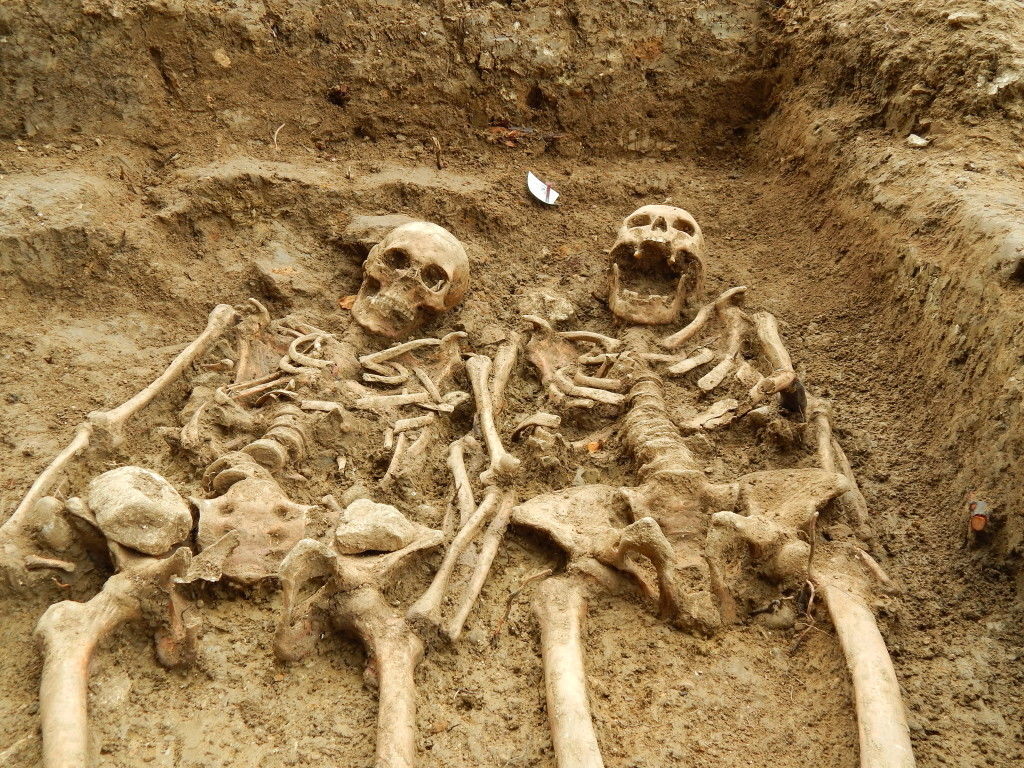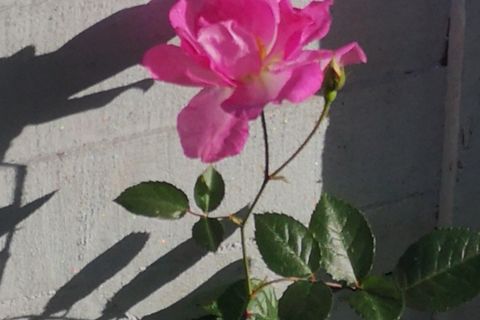'Til we're dust

Seven centuries backtime now
the lovers first hold hands.
Then take vows
holding hands,
at the chapel of St. Morrel.
She dares to ask
How long will you love me? My love.
He pledges
Until we are dust, my love.
I will love you 'til we're dust.
The lovers live long.
The lovers love well.
Always seen holding hands.
'Til we are dust
Became their mantra spell.
Known far and wide for their endless love
for the depths of their lovers well.
So,
with life but not love over they are lain together
fingers forever entwined.
How long will you love me? My love
I will love thee 'til we are dust.
( The University of Leicester Archaeological services dept. were asked to find the lost chapel of St. Morrel on it's suspected site near Hallerton, Liecestershire. When they were excavating the churchyard they found several fourteenth century internments including the couple. While it can be quite common for couples to be buried in the same plot to gently interlace their fingers can only be a recognition from those that knew the couple of an uncommon love. After the dig they were carefully recovered for preservation with the couple shown on the archaeological plan as The Lovers grave. They are still holding hand after 700 years, gently turning to dust.)
Like 3 Pin it 2Support CosmoFunnel.com
You can help support the upkeep of CosmoFunnel.com via PayPal.







Comments
Excellent write very moving
you sparked an interest in me to research this story for that I say thank you good sir.
Kade, thank you so much. I write about history because as a historian it's an occupational hazard. I also hope to inspire people to delve deeper, please enjoy. The LUAS website is a good place to start
Happy hunting
Nigel
????amazing Nigel this has it all
I love it to dust.
Thank you Edward,
If you approach history with a slightly skewed mind there are some lovely human stories.
Cheers mate
Nigel
I think you are right history is so black and white approaching a piece of history from a point of view not taking before can unlock some truths that may not have been picked up on or that may never be accepted.
I'm threading dangerously by saying this but I think Rudolph hess' story is one of great obscurity. History determined our outlook on him but further investigation into his story reveals that he may not have been as sympathetic to the aim of the NSDAP.
my point being we think we know history from books but books can't tell you what a person may have been thinking or how they felt and that gives us only one insight.
my opinion here is based on encounters with articles and books on the subject of Hess' journey to Scotland. It is objective thought purely for educational progress, not justifI cation for the actions of a war criminal, as a historian I would love to hear your thoughts on this Nigel.
Kade,
The entire history of the second world war, in varying degrees, is open to interpretation. For instance Monty's version of the desert war differs wildly to Auwkinlake's. Herman Hess' flight is a mystery from motive through to the crash. Whilst history, which demands evidence, will never be able to explain why he flew to Scotland mysteries are just big holes waiting to be filled with stories. That's where writers come in.
Nigel
Aw Nigel....you have a true romantic poets soul this is such a beautifully worded piece and really touching. Nothing says love is eternal more than this! The fact that after all these years they are still holding onto each other is just the most beautiful image. I love visiting Chichester Cathedral and the poet Philip Larkin wrote a poem entitled ‘the Arundel Tomb’ tomb about the effigies of the Earl of Arundel there and his second wife Eleanor of Lancaster, who were buried together and their marble effigies on their tombs shows them holding hands which was very unusual at that time but served to show the world that their marriage was truly a love match rather than an arranged one..I love this and your poem reminds me so much of ‘An Arundel Tomb’ You are in very good company my friend and deservedly so!. your friend Lodigiana xx
Thank you so much Lodigiana. An Arundel Tomb actually hadn't occurred to me and yes it was such a deliberate thing, a symbolic thing, to entwine the hands. The thing I love about this dig is that the chapel of St. Morrel was a small provincial church. These were normal folk laid to rest by the people that knew them. Other normal folk. For a community to make the point of interlacing their hands is so beautiful. Such a recognition of true love.
The other thing I love is that the remains are in such good condition after 700 years. The soil is obviously perfect for preserving bone so it will be millennia before they are dust.
As for being a romantic I am so very guilty as charged.
So happy that you like this one Lady L.
Nigel